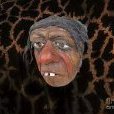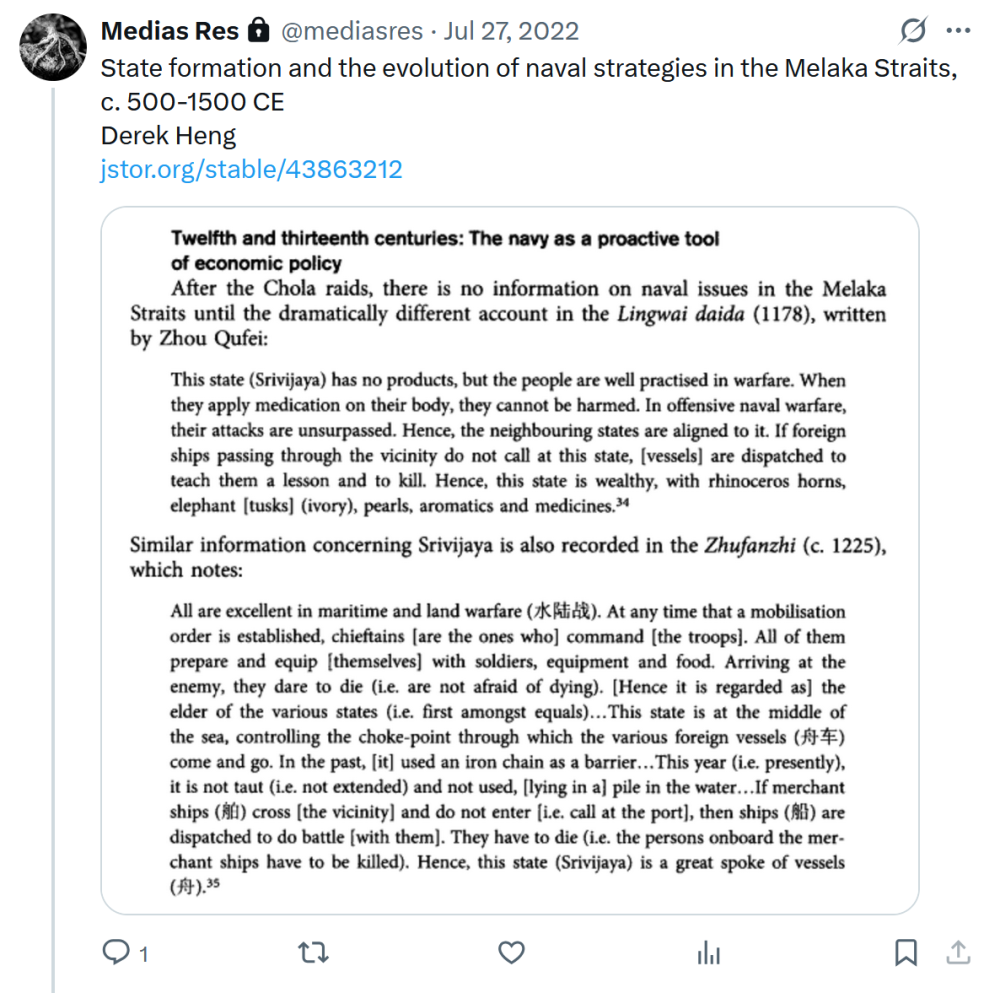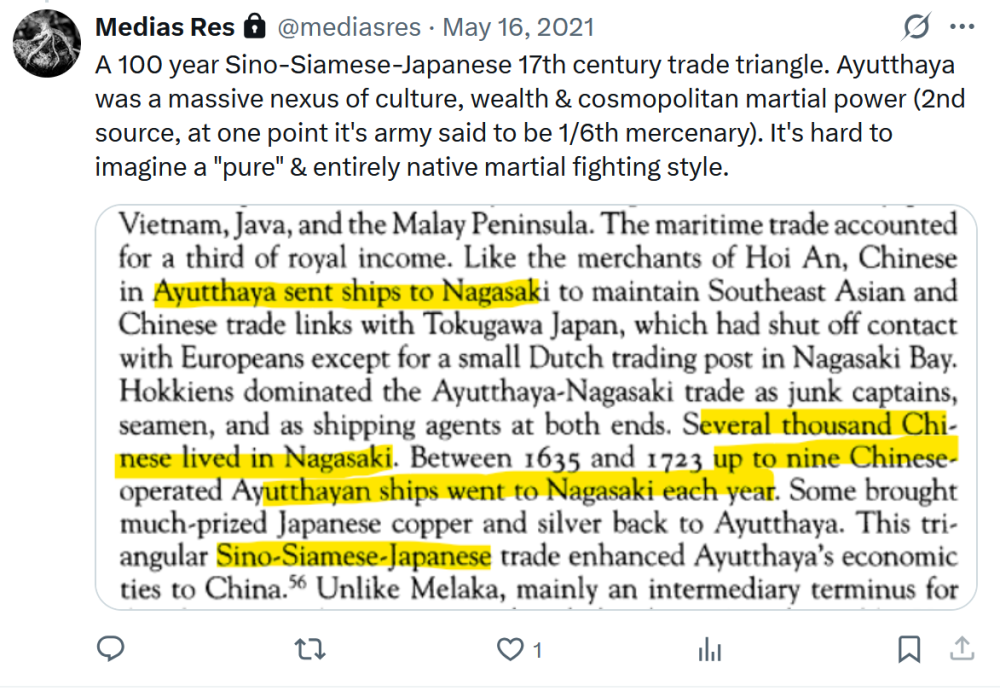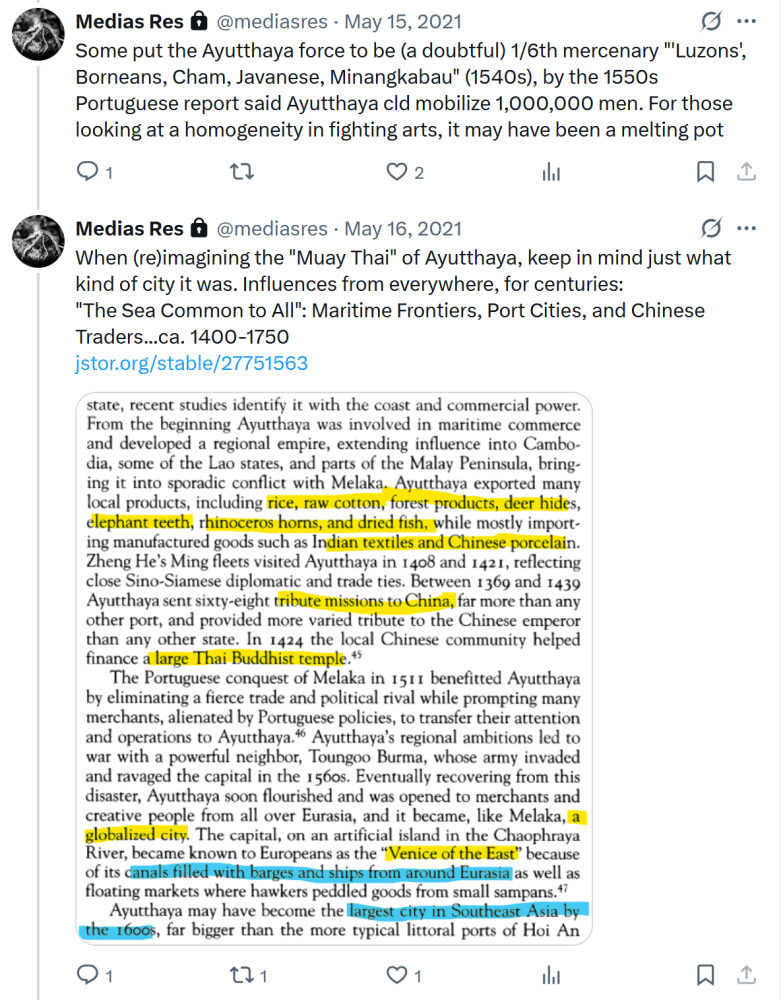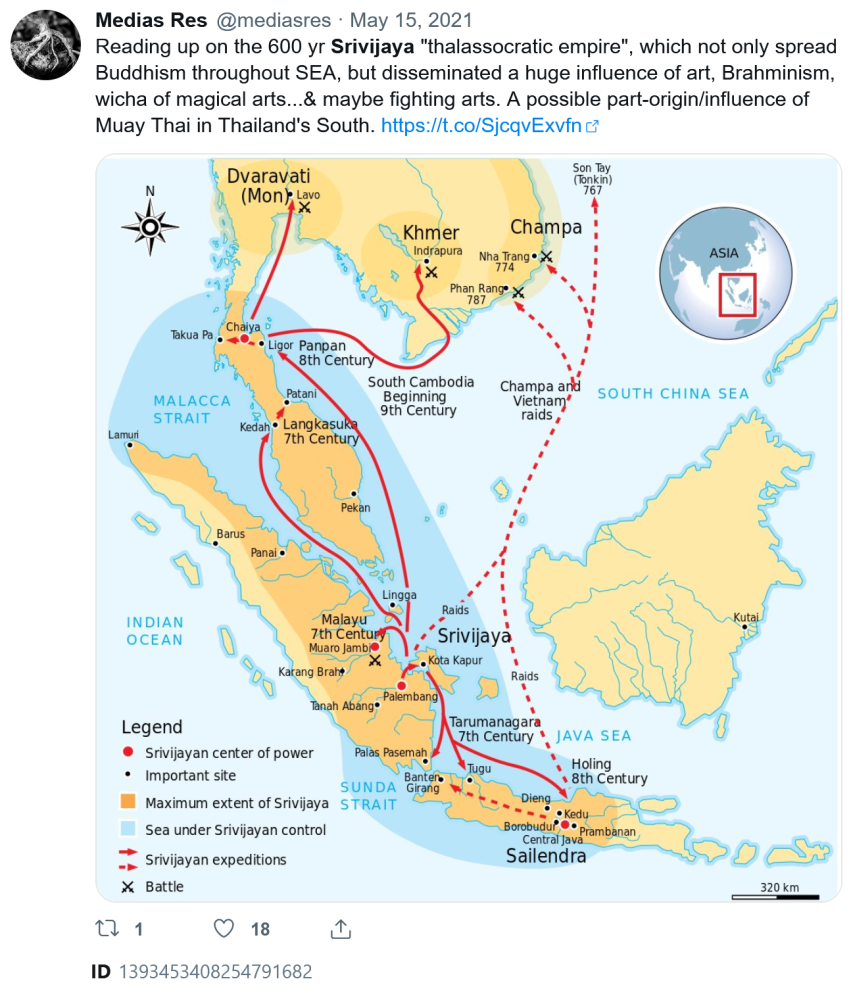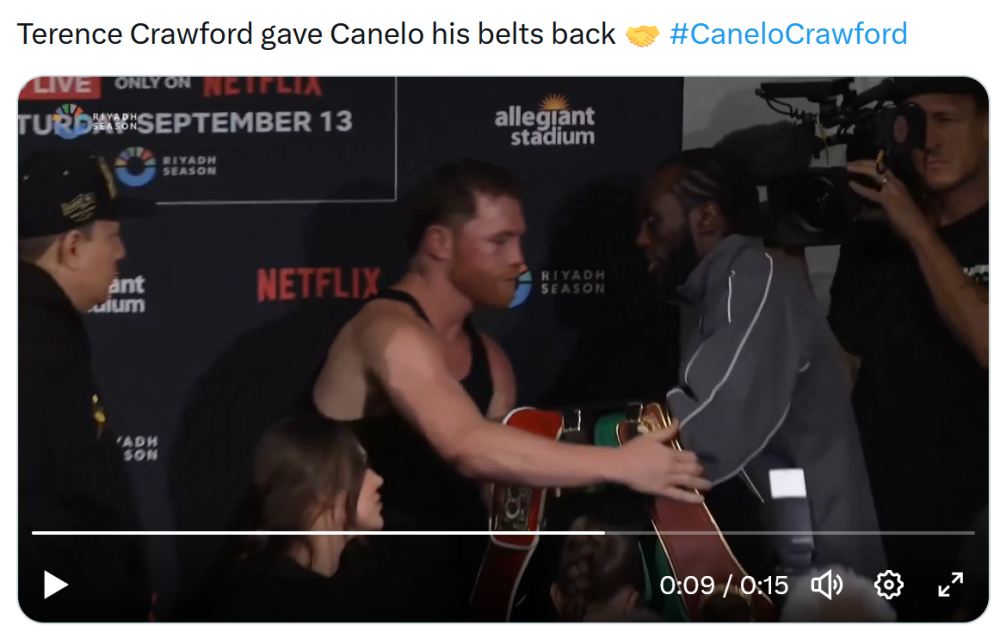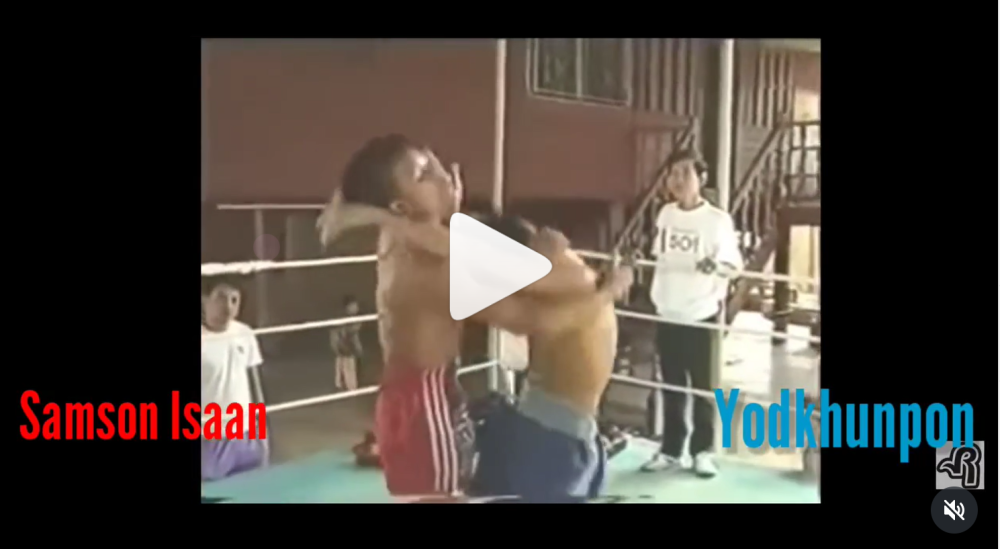-
Posts
2,264 -
Joined
-
Days Won
499
Kevin von Duuglas-Ittu last won the day on November 3
Kevin von Duuglas-Ittu had the most liked content!
About Kevin von Duuglas-Ittu
- Birthday 12/17/1964
Contact Methods
-
Website URL
https://www.behance.net/muaynoir
Profile Information
-
Gender
Male
-
Location
Pattaya, Thailand
-
Interests
Thailand, Muay Thai, cinema, philosophy, the philosophy of Spinoza, post-structuralism, feminism, community building, social media theory.
Recent Profile Visitors
54,003 profile views
Kevin von Duuglas-Ittu's Achievements
-
Speculatively, it seems likely that the real "warfare roots" of ring Muay Thai goes back to all the downtime during siege encampment, (and peacetime) Ayutthaya's across the river outer quarters. One of the earliest historical accounts of Siamese ring fighting is of the "Tiger King" disguising himself and participating in plebeian ring fighting. This is not "warfare fighting" and goes back several hundred years. One can imagine that such fighting would share some fighting principles with what occurred on the battlefield, but as it was unarmed and likely a gambling driven sport it - at least to me - likely seems like it has had its very own lineage of development. Less was the case that people were bringing battlefield lessons into the ring, and more that gambled on fighting skills developed ring-to-ring. In such cases of course, developing balance and defensive prowess would be important. Incidentally, any such Ayutthaya ring-to-ring developments hold the historical potential for lots of cross-pollination from other fighting arts, as Ayutthaya maintained huge mercenary forces, not only from Malaysia and the cusp of islands, but even an entire Japanese quarter, not to mention a strong commercially minded Chinese presence. These may have been years of truly "mixing" fighting arts in the gambling rings of the city (it is unknown just how separatist each culture was in this melting pot, perhaps each kept to their own in ring fighting).
-
For anyone who follows my writings I do not argue for any sense of a "pure" Muay Thai, or even Siamese fighting art history. Quite different than such I take one of Siam and Thai strengths is just how integrative they have been over centuries of development (while, importantly, preserving its core identity). For instance Western Boxing has had a powerful influence upon the form and development of Muay Thai for well over 100 years, and helped make it perhaps the premiere ring fighting art in the world, but Western Boxing itself was a very deep, complexly developed art which mapped quite well upon traditional Muay Thai in many areas, allowing it to flourish. This is quite different than the de-skilling that is happening in the sport right now, where instead the sport is being turned towards a less-skilled development, for really commercial reasons. The story of whether the influx of attention, branding, not to mention the very important monetary investment that Entertainment Muay Thai has brought will actually help "save" traditional Muay Thai is yet to be written. It very well might, as the sport was reaching some important demographic and cultural dead-ends, and it needed an infusion. But, let's not have it be lost, what itself is being lost, which is the actual very high level of skill Thailand had produced...and how it had developed it. Let's keep our eye on the de-skilling.
-
One of the more slippery aspects of this change is that in its more extreme versions Entertainment Muay Thai was a redesign to actually produce Western (and other non-Thai) winners. It involved de-skilling the Thai sport simply because Thais were just too good at the more complex things. Yes, it was meant to appeal to International eyes, both in the crowd (tourist shows) and on streams, but the satisfying international element was actually Western (often White) winners of fights, and ultimately championship belts. The de-skilling of the sport and art was about tipping the playing field hard (involving also weigh-in changes that would favor larger bodied international fighters). Thais had to learn - and still have to learn - how to fight like the less skilled Westerners (and others). In some sense its a crazy, upside-down presentation of foreign "superiority", yes driven by hyper Capitalism and digital entertainment, but also one which harkens back to Colonialism where the Western power teaches the "native" "how its really done", and is assumed to just be superior in Nature. The point of fact is that Thais have been arguably the best combat sport fighters in the world over the last 50 years, and it is not without irony that the form of their skill degradation is sometimes framed as a return to Siam/Thai warfare roots. It's not. Its a simplification of ring fighting for the purpose of international appeal.
-
This is the difficult thing, as Muay Thai shifts to a tourism economy. Things like defense and balance development (along with timing) are very hard to develop in fighters. It takes years, and in Thailand much of it comes out of the kaimuay tradition of fighters raised and fighting since boys. Fights traditionally were scored to favor these things and the training reflected their higher-level maturation. They became embedded in the culture, and the significance of Muay Thai in Thailand, part of its "Form of Life". Teaching them required a rich subculture (which today is highly eroded), and knowledge was passed down in a non-instructive way. As Muay Thai becomes turned towards "action" moments, and incorporates the lessor-skilled non-Thai, defensive and balance roots are increasingly not fed, and will starve. Non-Thais become trainers, not developed in the kaimuay tradition, favoring things they can teach well, especially memorized offensive combos (the new signature of Entertainment sport). The deeper enrichments of balance, control and defense pass away, and notably, as fighters are discouraged from displaying these things offense-first, trade-oriented attacks actually become MORE successful. It becomes a self-feeding system of entertainment.
-
Some common sense thoughts. Leaving aside the obvious fantasy that somehow what people are doing in a commercial ring is anything close to martial combat on a field featuring a huge diversity of weapons, multiple lines of attack and various stratagems, there are some things about this image that not only gets things wrong, it gets them 180 degrees wrong. Balance First - One of the essential elements on traditional Muay Thai is the scoring of "balance", both physical balance, but also psychological balance. Are you in "control" of yourself. In a field conflict the last thing you would want is to fall off balance, or go to the ground. And you certainly don't want to be emotionally out of control. Balance is hard to develop, so moving onto other more easy to train skills (like combo-ing) becomes tempting, as Muay Thai becomes "modernized" for tourism. Throwing 100% power, off-balance combos over and over is not really "martial". Defense - On a SEA pre-modern complex "battlefield", unless you are just being Berserk, defense matters first. You do not expose yourself to even significant wounding (because deadly infection rates would be high). Instead, a priority would be defense-first. One of the aspects of traditional Muay Thai is that it largely emphasizes this A fighter who can defend and control the fight through defensive prowess was rewarded, scoring was biased along this slant for a substantial part of its history. These two core aspects of Thailand's traditional Muay Thai, scored balance and scored defense, are really closer to "martial" principles than anything you'd find in a highlight reel. What hyper-aggressive, low-defense, high-risk Entertainment Muay Thai does is make us FEEL like its war, largely from how we've come to feel about combat in cinema, from Kung-Fu showdowns to WW1 trench charges. Its there for Entertainment, and often really just to produce highlight KOs that can go into social media streams and spread the brand, so people don't even really have to watch the fight. That's okay, part of sport is just "entertainment", and can be swapped with the John Wick 4, or even cute sqeeee kittens on the Gram. But, let's not fool ourselves that it is somehow journeying back into its warfare roots, in terms of how its actually fought. Non-star Thai fighters today are constantly urged to give up all semblance of defensive control, to "sped up" with the new combos they are training on, and take high level trading risks with often bigger foreign opponents who train the same. The core, deeper aspects of fight prowess, control over oneself and defensive priority, is being left behind and some really may be lost. Let's not even talk about the much deeper disparities between ring Muay Thai and much of the warfare in the 1700s in Siam. The battle field had European rifle regiments, elephants, cavalries and every fighter was armed with a blade (on the larger scale most were probably farmers who used their harvest blades), and great deal of it was siege warfare. People were not just giving up their bodies in swinging attacks over and over. There is also significant historical evidence that European warfare was very different than SEA warfare, in that killing the enemy was much less a goal than capturing and enslaving them, because captured "enemy", often full villages, meant wealth (labor). I believe I read an estimate that Burma took more than 10,000 Siamese back to Burma as labor, some for even high level artisan labor, when Ayutthaya fell. Warfare was often a game of capture, and it was fought seasonally - there was "war season" just as wild elephants were seasonally captured.
-
I think people are becoming aware that there is a kind of tourism pipeline that has developed, from commercial gyms to Entertainment Muay Thai, put on for tourists. Tourists working for tourists in tourism "shows", (notably a sport redesigned for tourists to win). There are a lot of things of value in these fights, but people are also becoming aware that they are on a conveyor belt that was made for them. The Muay Thai they came for is far from these experiences. It's very hard to work your way free from this "system" which has become pervasively pointed at the Westerner. Gyms face the problem that people come to them and say: I don't want to fight on these shows, under these rules...because this is actually a tourism system. It's made for you. For you.
-
Somehow this is very beautiful (even if common). What a beautiful fight Crawford fought. I think there were some definite dangers in this fight, that people have been ungenerous with Canelo. That hook to the body was becoming a problem, and could even have won it, but Crawford solved it in a subtle and shifting ways.
-
There is a very strange thing happening. Waves of affluent tourism are being sent to what really is a Low Caste art and sport. Many do not realize that Thailand's society is still somewhat an operational, invisible caste system, itself formed from Siam's own, once widespread slavery and indentured servitude. The ironic thing is that some of Muay Thai's most beautiful, meaningful traditions of meaning - the things that lift it from just being a rationalized combat sport, or entertainment violence, and very likely also what made Thailand's nakmuay so incredibly effective as fighters - themselves are woven into and from that invisible caste system. It is quite extraordinary that this lower caste art and sport is becoming gentrified by both hi-so internationism and government tourism ambitions. That the sport itself is being altered so that the affluent can win, and so that traditions (and aspects of invisible caste) will be eroded. I'm not sure anything like this has ever happened before in history, I can't think of an immediate parallel. When (relatively) affluent adventure tourists attempt to partake directly in "traditional" Muay Thai they are crossing many invisible lines in the culture. A (relatively) high status person is trying to enter a low status position, blind to even the nature of "status".
-
https://www.instagram.com/reel/CuuXPkmp-SK/?igsh=MW1wcW1oZDZtMzgybg%3D%3D A great little clip of legends Yodkhunpon and Samson clinching back in Roi Et where they were upcoming Isaan fighters. Notably, you see ZERO "pretzel" (the pretzel discussed here at some length: https://www.patreon.com/posts/130545342/ ); also Samson clearly the stronger clinch fighter technically, see how everything is wrists and hands and neck, whereas Yodkhunpon avoids any of those leverages, which Samson sews together somewhat relentlessly. Also, those two nice rips. Yodkhunpon a different sort of clincher, and Sylvie and I joke today that a reason why Yodkhunpon is so anti-clinch in their sparring is that he had to suffer through clinching with Samson on the comeup, a fighter here likely at least a weight class lower. Namkabuan used to talk about how having to train against his Muay Khao brother Namphon really shaped him.
Footer title
This content can be configured within your theme settings in your ACP. You can add any HTML including images, paragraphs and lists.
Footer title
This content can be configured within your theme settings in your ACP. You can add any HTML including images, paragraphs and lists.
Footer title
This content can be configured within your theme settings in your ACP. You can add any HTML including images, paragraphs and lists.


